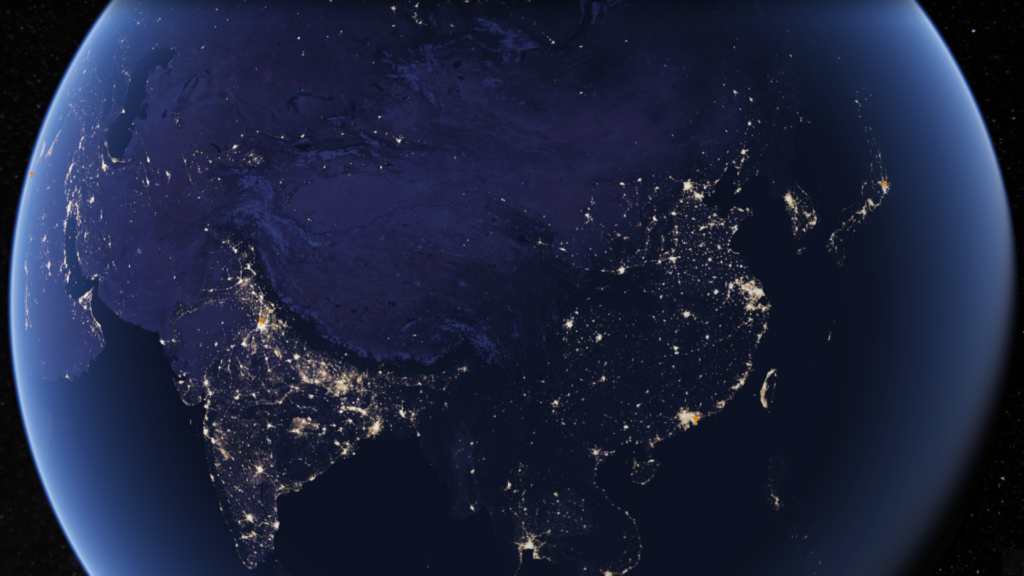“Similar to Recent Observations in Xinjiang”: The Expansion of Prisons in Tibet and the Receding Spaces of Information in China

August 2, 2023
A UHRP Insights column by Henryk Szadziewski, Director of Research, Uyghur Human Rights Project
A recent RAND Europe research brief highlights the probable growth of existing prisons and detention centers in the area of Tibet the Chinese government calls the Tibetan Autonomous Region (TAR). The findings reveal a possible “shift towards longer detentions and imprisonments and is similar to recent observations in Xinjiang,” referring to a 2021 RAND report.
There are several disturbing aspects to the research. The first of these is the devastating impact of long-term imprisonment on Tibetans, as well as the communal assault on the people of Tibet. The second is the cynical transfer of a brutal strategy of control from the Uyghur homeland, a space where the United Nations has determined crimes against humanity may be occuring. However, the third is the necessity of RAND Europe’s research methodology.
RAND Europe used satellite imagery and nighttime lighting data to examine 79 detention facilities in the TAR. The analysis revealed that an expansion of nighttime lighting was particularly prominent in the 14 facilities categorized as “higher security.” The findings indicated a surge in nighttime lighting across prisons during the years 2019–2020, while the high-security detention facilities experienced growth during the period of 2021–2022. Lower security facilities seemed to have peaked, in terms of lighting expansion, in 2017.
The use of satellite imagery in exposing human rights abuses is nothing new. While governments have deployed the latest in surveillance technology for repression, human rights researchers have utilized digital methods to uncover rights violations that states prefer to keep under wraps. Satellite imagery was key in uncovering the extent of detention facilities in the Uyghur region. The Uyghur Human Rights Project’s report on the destruction of religious sites in East Turkistan used a similar method.
Yet, there is something profoundly disturbing about the diminishing availability of data emerging from China. RAND Europe’s director of defense and security, Ruth Harris, speaking to The Guardian said, “Tibet remains an information black hole.” Tenzin Choekyi, a senior researcher with Tibet Watch added, “Because of the information delay and disarray, it’s difficult to tie a coherent narrative together of what’s happening in the TAR.”
In East Turkistan, as Nathan Ruser and James Leibold write, the latest Xinjiang Statistical Yearbook, released in March 2021 and encompassing data for 2019, notably excluded crucial demographic statistics, such as birth rates categorized by region, population figures categorized by nationality and region, as well as birth control statistics according to different regions. Ruser and Leibold conclude “those omissions seek to make the study of demographic trends in Xinjiang more difficult and to censor politically sensitive information confirming the sharp decline in birth-rates among minority nationalities in Xinjiang.” Further, in March 2023, in a blow to the sharing of scholarship across borders, Chinese databases of academic papers shut out overseas researchers due to “security concerns.”
Xi Jinping has stated that China’s destiny is to become a global superpower by 2050. However, China’s current global influence needs no further restating through statistics. It is a transnational political and economic force. China’s standards of governance and commerce will become the standards in the lives of billions.
Given this reach, human rights researchers, academics, political leaders, private sector actors — everyone — should all be asking for greater access to information from China. While we all understand that China controls and manipulates knowledge, this should not be accepted as normal. As China expands its interests, it is also limiting what we know about it. Shouldn’t we keep asking for less secrecy from a government that is imposing its influence over the globe?
For now, researchers will have to continue the painstaking work of mining the internet, scanning satellite images, and interviewing survivors to uncover human rights violations in China and elsewhere. We need to know more about what is happening to Uyghurs and Tibetans if we are to comprehend the rise of China and how to manage it effectively.
As researchers, our recommendations to policymakers and other actors should not only include an end to rights abuses, but also an insistence that our representatives repeatedly challenge China on freedom of information as a condition of engagement. Otherwise, the Chinese official’s job of denial and deflection of crimes against humanity is made all the easier.
